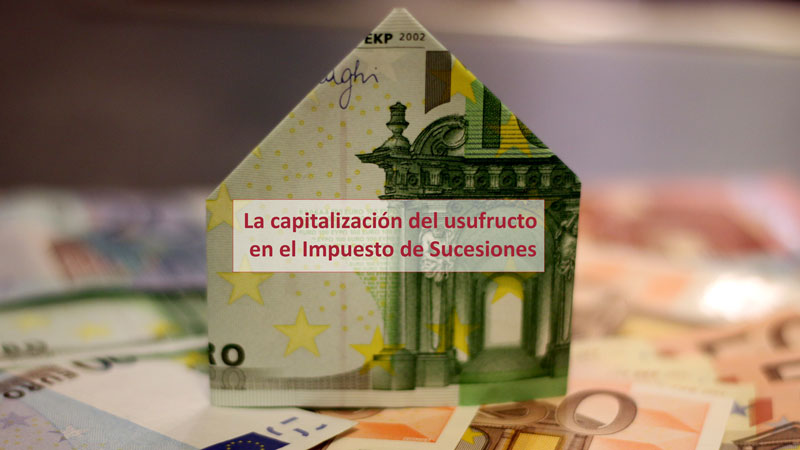The majority of Spanish wills include the lifetime usufructuary figure, in which the deceased grants the use of all or part of their estate to an individual (usually their spouse) until their death. Faced with the testator’s will, the other heirs can only abide by it.
More specifically, in the Spanish Civil Code, this concept is defined as: “the right to use third-party assets with the obligation to conserve their form and substance, unless the title of their constitution or the law authorises otherwise.” The conservation of the assets includes the payment of utilities or taxes incurred by the asset. The usufruct may also be temporary, for a specific period of time, although in the majority of the cases it is established for life.
This means that the usufructuary (the individual receiving the usufruct) will have the right to receive all future natural, industrial and civil fruits from the assets granted. As an example, it could be said that, if an individual has received the usufruct of a cultivation field, said individual will also receive the fruit obtained from said field or the rent charged for it. Moreover, the beneficiary may enjoy the asset subject to usufruct themselves, rent it to someone else and transfer their usufruct, even if it is free of charge, but all contracts entered into as such usufructuary will be terminated at the end of the usufruct, except from the leasing of rural property, which will be deemed to subsist during the agricultural year.
What happens when usufruct appears in an inheritance?
Usufruct means that full ownership of an asset is divided into two different ways of having said property:
- Bare Ownership. The bare owner will be the individual who owns the property according to the Civil Code.
- Usufruct. The usufructuary will be the individual who has the right to use and enjoy the asset, as well as receive the fruit of this property during the usufruct period.
So, what does capitalising usufruct mean?
Capitalising usufruct means that both the bare owner and the usufructuary accept that Full Ownership of an asset is NOT divided between two individuals, but rather that one or both of them maintain Full Ownership, but a specific percentage on said asset.
The capitalisation of usufruct is a commonly applied and accepted method by jurisprudence when it comes to dealing with issues regarding inheritance rights. It is used frequently given that it plays a very important role when balancing the amounts of estate when it is divided between various heirs, when signing the inheritance allocation deed, thus preventing excesses or flaws in the allocation and, of course, preventing future problems.
If there is an agreement between heirs, there will be no problem carrying out the capitalisation of usufruct. On the other hand, if one of the heirs opposes, the testator’s will must be taken into account, making the application of this system impossible. However, it must be said that there is an exception in our law when the Civil Code states that “the spouse who, upon the death of their partner, has not legally or factually separated, if such spouse concurs with children or offspring to the inheritance, will have the right to the usufruct of the so-called improvement third” and, in this case, the heirs may pay the spouse their part of the usufruct, assigning them an annuity by mutual agreement or by court order.
In turn, capitalisation of the usufruct normally saves a large amount of inheritance tax, if not all of it, given that the value of the usufruct in the inheritance disappears because, as we have explained, it is all transferred as Full Ownership, even if this is with different percentages.
With regards to taxation, what does “capitalising usufruct” consist of?
The capitalisation of the lifetime usufruct consists of converting said concept in a numerical value for its inheritance allocation and granting full ownership of a property to the person who was originally to be the usufructuary, but in the percentage corresponding to them calculated according to the usufruct rules. The conversion is carried out using mathematical calculations as follows: 89 minus the usufructuary’s age. The result is a number which is applied as a percentage and said percentage is multiplied by the asset’s value. For example:
89-74 (usufructuary’s age) = 15%.
15% x € 250,000 (asset’s value) = Usufruct value
The percentage applied can never exceed 70% and can never be less than 10%.
What does “capitalisation of usufruct” mean in civil terms?
The matter will turn around when the estate is composed of cash only, in which case the usufructuary would not be able to dispose of it, but would be able to dispose of the interest that the money would give in a savings account or investment fund, for example. Therefore, the capitalisation of the usufruct solves this problem, since civilly it supposes the disappearance of the usufruct, distributing all the inheritance as full ownership at 15% (for example) to the usufructuary and 85% for the heirs. This way, the bank account balance could be distributed in the percentages of our example and each heir could dispose freely of these amounts.
If you found this article interesting, please feel free to share it.

 Español
Español Русский
Русский

Hello
I am considering transferring the usufruct of my house in Malaga into my UK Limited Company.
I would be grateful if you can outline the process and costs please ?
Regards
Maurice Mulvihill
Dear Maurice,
Thank you for your comment in our website.
Please, send us the title deed of your house to can review it, we will read it and then we will send you a Budget by email, but before, please explain us exactly why you want to pass only the usufruct and what is the final action that you want to obtain with this operation.
Our email is [email protected]
Kind regards,